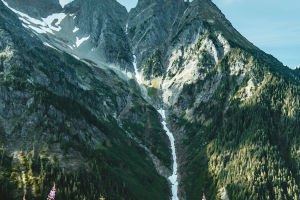Hi Lykkers! Mountain photography offers a unique opportunity to capture breathtaking landscapes.
With the right techniques, anyone can take photos that highlight the majesty and serenity of mountainous scenery.
Here are some practical tips to help you capture those perfect mountain views!
Timing Is Everything
Lighting plays a crucial role in mountain photography. Early morning and late afternoon are the best times for capturing vibrant mountain scenes. The soft light of sunrise and sunset—often referred to as the "golden hour"—helps to create stunning shadows and highlights that emphasize the textures and layers of the mountains. Midday light can be harsh, leading to overexposed images and harsh shadows, so it’s best to avoid shooting during the peak sun hours.
If you’re photographing snow-capped mountains, the quality of the light changes throughout the day. Snow reflects light intensely, so early mornings and evenings allow for a softer, more balanced image. The golden light brings out the warm tones in snow and rocks, adding depth to your photos.
Composition Tips for Mountain Photography
A great mountain photo is all about composition. Consider the rule of thirds: Imagine your frame divided into nine equal parts, and position your main subject along the lines or at the intersections. This technique adds balance and interest to your images.
In mountain photography, leading lines can also guide the viewer’s eye through the landscape. Roads, rivers, or ridgelines can act as natural lines, drawing attention toward the mountains. Additionally, using foreground elements like trees, rocks, or flowers helps frame the scene, creating depth and perspective.
Depth and Scale
Mountains can look flat and uninteresting in photographs if not properly captured with a sense of scale. To convey the size and grandeur of the mountains, include objects in the foreground that provide context, such as hikers, animals, or trees. This technique gives a sense of depth, making the mountains appear towering and majestic.
Wide-angle lenses are ideal for capturing large landscapes, while longer focal lengths can help zoom in on specific features or compress the scene, highlighting the layers and textures of the mountains. Don’t hesitate to experiment with different focal lengths to find the one that best showcases the mountain range's true beauty.
Weather and Atmosphere
The weather plays a significant role in mountain photography. Fog, clouds, or stormy skies can add drama and mystery to the scene, turning an ordinary mountain view into something extraordinary. Don’t shy away from overcast days or unpredictable weather—sometimes these conditions produce more compelling photos than clear skies.
For more vivid mountain photos, try capturing a range of atmospheric effects like a storm approaching or mist rising from a valley. You can also shoot after a rainstorm when the mountains are fresh, with vibrant colors and crisp air.
Focus on Details
While sweeping panoramic views are stunning, don’t forget to zoom in on the small details. The texture of rocks, the patterns of snow, or the intricate features of plants in the foreground can make for striking photos. These close-up shots bring a different perspective and allow you to highlight the beauty of nature’s finer elements.
Post-Processing Tips
Post-processing can enhance the natural beauty of your mountain photos. Editing software allows you to adjust exposure, contrast, and sharpness, bringing out the best in your shots. When editing, aim to keep the image looking natural, enhancing the colors and contrasts without making them look overly saturated.
Sometimes, mountain photos benefit from subtle edits in clarity and sharpness to accentuate the jagged textures of the landscape. However, be cautious not to overdo it, as this can result in an unnatural look. Keeping a balance between enhancing and preserving the natural feel of the scene is key.
Taking great mountain photos is all about timing, composition, and understanding the environment. By paying attention to lighting, weather conditions, and the scale of your subject, you can create stunning, timeless images that showcase the awe-inspiring beauty of mountains. Remember, each trip to the mountains is an opportunity to experiment, learn, and discover new perspectives—so take your camera, embrace the adventure, and start capturing those unforgettable views!
Mountain Photography (7 Powerful Tips)
Video by James Lorentson Landscape Photography


